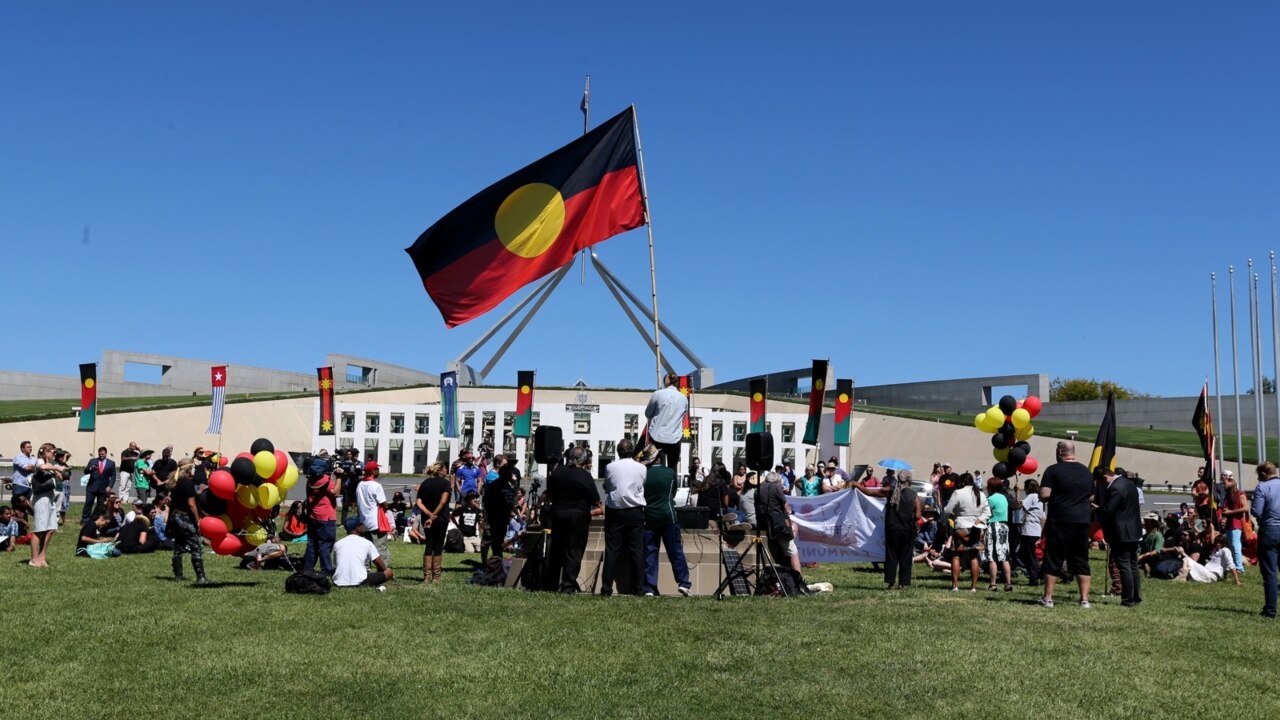Liberal blueprint ‘to make Indigenous voice to parliament work’
Liberal MP Julian Leeser has outlined a blueprint that would let parliament legislate who in the executive government the advisory Indigenous voice body could talk to and what it could talk about.

Julian Leeser, the Liberal MP spearheading that party’s position on the Indigenous voice to parliament, has outlined a blueprint that would let parliament legislate who in the executive government the advisory body could talk to and what it could talk about, in a proposal radically different to that put by Anthony Albanese.
Two days before the Liberal partyroom holds a special meeting to thrash out its position on the voice and Labor’s proposed constitutional amendment, Mr Leeser said the government should remove the second clause amid fears it “puts at risk the entirety of the cause at the ballot box” and would be used as the “rallying point” for the No campaign.
However, University of NSW constitutional law expert George Williams said removing the second clause “gutted” the government’s amendment and “left us with a voice that may have no voice”.
Greg Craven, who like Professor Williams is a member of the government’s constitutional expert group, said omitting the second clause would be a “clear way” to resolve legal concerns.
He said he believed a middle ground between Mr Leeser’s suggestion and the government’s proposal could be found.
The second clause says the voice “may make representations to the parliament and the executive government of the commonwealth on matters relating to Aboriginal and Torres Strait Islander peoples”.
Mr Leeser said he believed in principle the voice should be engaging with the executive government but it should be given that power through legislation. “The inclusion of that clause, and the way it is drafted, raise three immediate issues. First, who can the voice talk to? Which agencies are ‘in’, and which are ‘out’, when it comes to being part of the executive government?” he said in his National Press Club address.

“Second, what can it talk about? In other words, what are the ‘matters relating to Aboriginal and Torres Strait Islander peoples’? Third, what does it mean to ‘make representations’?
“Does it imply or leave room for any reciprocal constitutional obligation on the parliament or the executive? There are a few bald assertions to the contrary in the government’s explanatory materials, but the issue hasn’t been considered in depth in any public forum. It’s not enough to say these questions will be addressed in legislation afterwards.”
As the parliamentary committee scrutinising the government’s proposed referendum question and constitutional amendment met to appoint its chair and deputy chair, Labor’s Nita Green and the Liberal Party’s Keith Wolahan respectively, Mr Leeser said the No campaign would use the second clause to argue it would create a new layer of bureaucracy and there would inevitably be court challenges.
“I believe the clause creates doubt and uncertainty,” Mr Leeser said. “Why allow room for debate about whether a particular government entity is or is not part of the executive government?

“Why leave it to the High Court to decide what the Constitution means by ‘make representations’. If the parliament has the power to establish the voice, and define its powers, why does the power to make representations need to be in the Constitution?
“Why not simply put them in legislation?”
Liberal members of the shadow cabinet are to meet first thing on Wednesday morning before the partyroom convenes.
Professor Craven agreed that the second clause was the “problem section” on which the No case would focus, but said there was not just one way to “fix it”.
“One way is to omit it, one way is to pick up the (Attorney-General Mark) Dreyfus set of words (clarifying it would be up to parliament to decide what obligations the executive government has to consider and respond to the voice’s representations), and Father Frank Brennan has an option where you take out ‘executive’ and put in ‘ministers of the crown’,” Professor Craven said.
Professor Williams said removing the whole of clause two gutted the provision and left the voice without any core function guaranteed in the Constitution.
“I thought (the Liberal Party) might argue for the removal of the executive, which is consistent with what people like Greg Craven and others have been suggesting,” he said.
“If you remove clause two, you don’t even have a requirement for anything to have a voice. You’ve got ‘There will be a body called the voice’ - but parliament will say what it does.
“(Mr Leeser’s proposal) is not something that can lead to bipartisanship or agreement because you don’t have a voice to parliament. We may be left with a voice that has no voice, this formal body that has no meaningful role.”








To join the conversation, please log in. Don't have an account? Register
Join the conversation, you are commenting as Logout